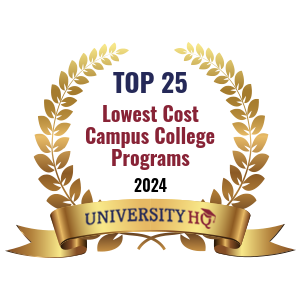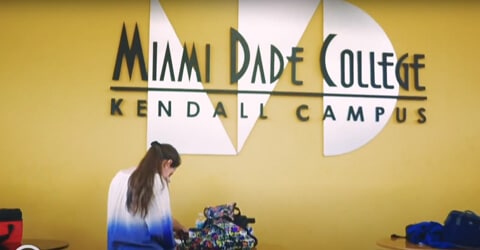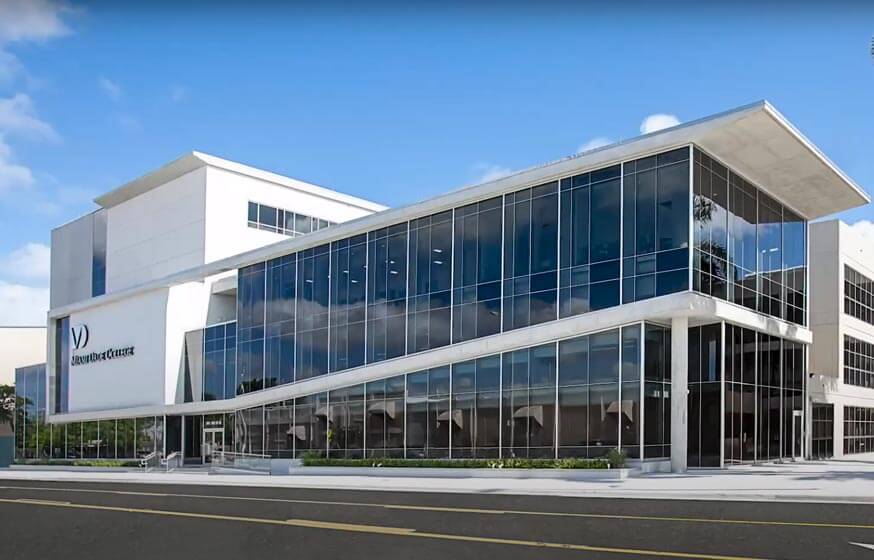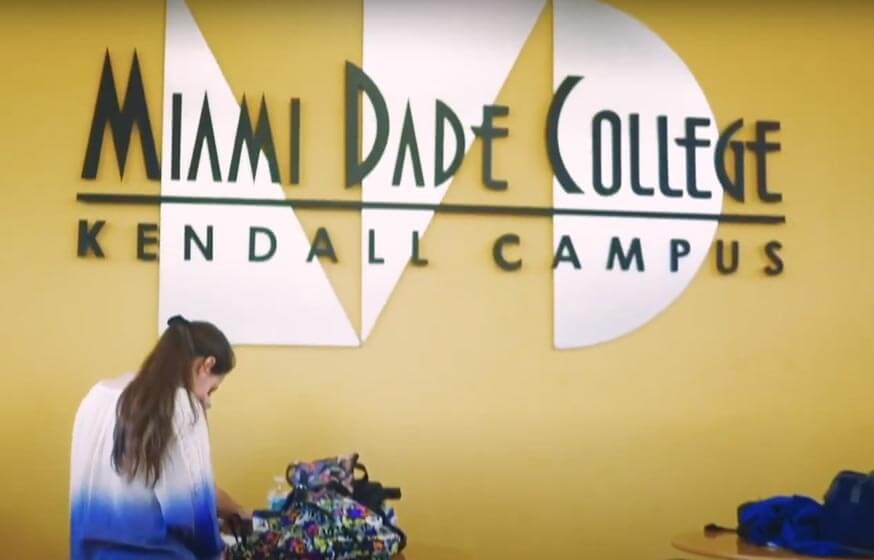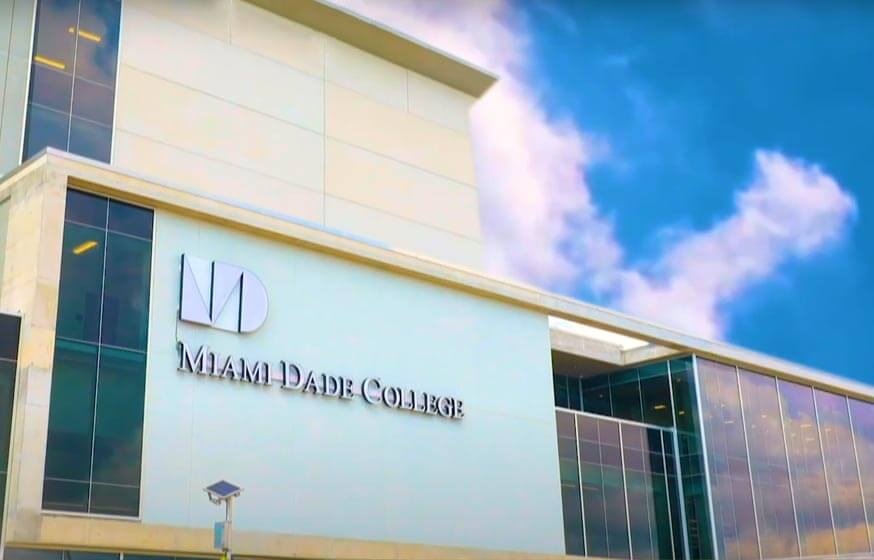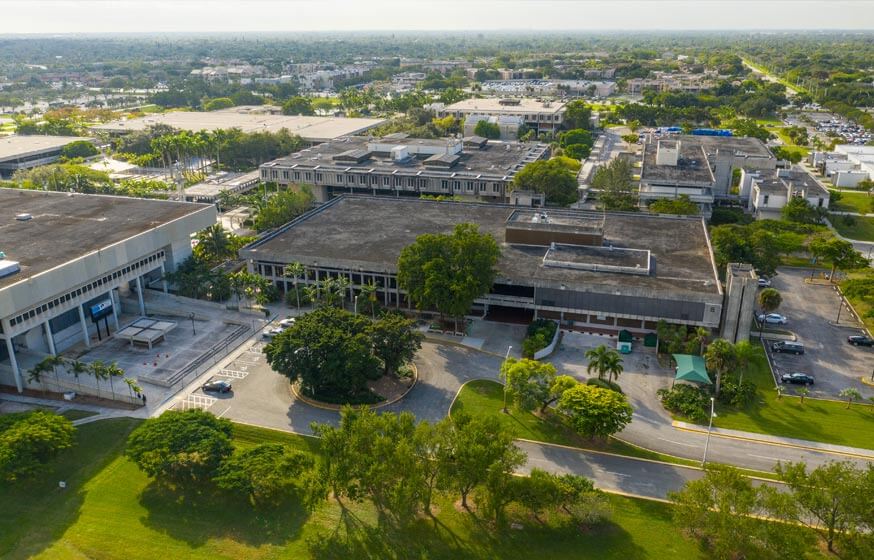Get Matched With Online Colleges
Miami Dade College offers a combination of remote classes, on-campus classes, and blended classes (which are partially on-campus and partially online). Campus housing is not offered, so you’ll have to live in an apartment or at home, not that housing would be hard to find in Miami, FL.
Search All Programs
Overview of Miami Dade College
The college primarily offers associate degrees, though there are some bachelor’s available in business, biological sciences, computer science, education, engineering, and health. There are also undergraduate certificate programs in many fields.
If you’re going to be taking your classes on-campus, take time to familiarize yourself with where your classes will be held. Because Miami is a large city, you may also want to become familiar with the area, if you aren’t already a resident.
The student population is large, with over 54,900 students taking classes. Many of these students may be taking their classes fully online, but the student-to-faculty ratio is somewhat high at 19 to 1. Regardless of whether you are taking classes on-campus or online, make sure get in touch with your professors quickly if you are having trouble with your classes. Open office hours may fill up quickly and their email is likely to be overrun.
Before you start taking classes, you may want to check the different ways that credit will be accepted beyond taking classes at the college. You have several options including dual credit, in which you take college and high school classes at the same time. If you passed AP exams, these can earn you credit toward graduation and, if you have pertinent life experiences, these may also qualify you for extra credits.
General Information
| School Type | Primarily associate's, Public |
|---|---|
| Campus Setting | City: Large |
| Campus Housing | No |
| Student Faculty Ratio | 19:1 |
| Graduation Rate | 35% |
| Year Founded | 1959 |

Student Enrollment
Total Students54,973
54,973
NA
Undergraduate Student
Male 23,638
Female 31,335
Graduate Student
Male NA
Female NA
Explore Map
Top Rankings For Miami Dade College
Admissions
APPLICATIONSNA
ACCEPTANCENA
Acceptance RateNA
Enrollment NA
| Admissions | |
|---|---|
| Application Fee | $30 |
| High School GPA | NA |
| High School Rank | NA |
| High School Transcripts | NA |
| College Prep Courses | NA |
| Recommendations | NA |
| SAT/ACT | NA |
| TOEFL (Test of English as a Foreign Language) | NA |
| Application Deadline | March 5 |
| Common Application Accepted | NA |
Tuition Cost & Financial Aid
As you get ready to start college at Miami Dade College, you should be discussing the cost with your family. As of a recent academic year, the total cost was estimated to be $26,678—this included in- or out-of-state tuition, books, supplies, your rent and food (to substitute for room and board), and other costs.
There is one very good reason why your family likely won’t have to pay the full cost: financial aid. During that same recent academic year, the average net price was $4,947. The average net price is the total cost of school for a year, minus the financial aid the students are able to procure. However, your financial aid is based on your family’s annual income, so your cost could still vary from that average number. Families earning less than $30,000 annually paid around $4,471, while families earning between $48,001 and $75,000 paid $6,704, and those earning more than $100,001.
About 84% of freshman students qualified for financial aid in recent years. Eighty-three percent received grants or scholarships averaging $5,782 and 19% received an average of $2,559 in institutional grants and scholarships.
| Average net price | 2017-2018 |
|---|---|
| Net Price | $6,393 |
| Average Total Aid | $5,782 |
| Students Receiving Financial Aid | 84% |
| Room & Board | $17,302 |
Sticker Price
- Tuition In-State - $2,838
- Tuition Out-of-State - $9,661
- Books and Supplies - $1,500
- Room & Board - $17,302
- Other - $5,038
Academics
Miami Dade College has an overall graduation rate of 33%, which may seem low but is pretty average for local, public schools such as this one. This doesn’t include the students who transfer to another school and graduate there, even if they were only one class off from graduating with an associate degree when they decided to earn their bachelor’s elsewhere.
Because some of the student population goes to school on campus while other students go to school online, MDC makes it possible for the entire student body to take part in distance learning or evening classes. For students who work during the day, having these options means the difference between taking these classes on time and being forced to spend longer on their degree in order to take a class that may only be offered every other semester. This could be you. Once you realize that there’s a time conflict, get in touch with your advisor and discuss whether or not it’s possible to pick the class up in an evening section or online format.
The five most popular degree programs offered at MDC are business, management, marketing and related support services; health professions and related programs; homeland security, law enforcement, firefighting and related protective services; computer and information sciences and support services; and education.
Retention
Rate
4 year
Graduation
Rate
6 year
Graduation
Rate
Student Population Total
Student Population 54,973
54,973
NA
Most Popular Programs & Majors
(# of Diplomas Awarded by Subject)
| All Business Majors | 480 Total Graduates / 39% |
|---|---|
| Business Administration, Management and Operations, Other | 455 Graduates |
| Logistics, Materials, and Supply Chain Management | 25 Graduates |
| Health Professions and Related Programs | 298 Total Graduates / 24% |
| Registered Nursing/Registered Nurse | 277 Graduates |
| Health Services/Allied Health/Health Sciences, General | 21 Graduates |
| Homeland Security, Law Enforcement, Firefighting and Related Protective Services | 142 Total Graduates / 12% |
| Homeland Security, Law Enforcement, Firefighting and Related Protective Services, Other | 142 Graduates |
| All Computer Information Science Majors | 102 Total Graduates / 8% |
| Information Technology | 83 Graduates |
| Computer and Information Sciences, General | 19 Graduates |
| All Education Majors | 78 Total Graduates / 6% |
| Special Education and Teaching, General | 4 Graduates |
| Early Childhood Education and Teaching | 25 Graduates |
| Mathematics Teacher Education | 5 Graduates |
| All Other Diplomas | 10% |
Outcome & Salary
You’ve graduated! Once you reach this milestone, you’re ready to start that job you’ve had your eye on for years, or at the very least you’ll have all your feelers out in your field looking for the perfect career starter. Miami Dada College graduate’s early-career salaries average around $45,100 and their mid-career salaries jump to $77,700.
This puts these graduate’s 10-year earning potential at $520,000, and their 20-year earning potential is $1,297,000, even assuming they don’t earn any further education. The average 4-year cost of this education is $25,572, which, if you subtract that from your 10- and 20-year earning potential, will give you a solid number showing your return on investment (ROI). This makes your 10-year projected ROI $494,428 and your 20-year ROI $1,271,428.
Some high school graduates may choose not to go to college. Their national average salary is just $38,792, though of course there are some outliers that make plenty of money when they go into welding or other skills-based careers. However, on average, their 10-year projected income is $387,920 and their 20-year projected income is $775,840.
| Graduates Salary | |
|---|---|
| College Grads Early Career Salary | $45,100 |
| College Grads Average Salary | $52,000 |
| College Grads Mid Career Salary | $77,700 |
| Return on Investment (ROI) | |
|---|---|
| 10 Year Salary Earnings Potential | $520,000 |
| 20 Year Salary Earnings Potential | $1,297,000 |
| Cost of Education (Net Price) 4 Year | $25,572 |
| 10 Year Projected ROI | $494,428 |
| 20 Year Projected ROI | $1,271,428 |
| No College Education Salary Comparison | |
|---|---|
| National Average Salary | $38,792 |
| 10 Year Projected Income | $387,920 |
| 20 Year Projected Income | $775,840 |
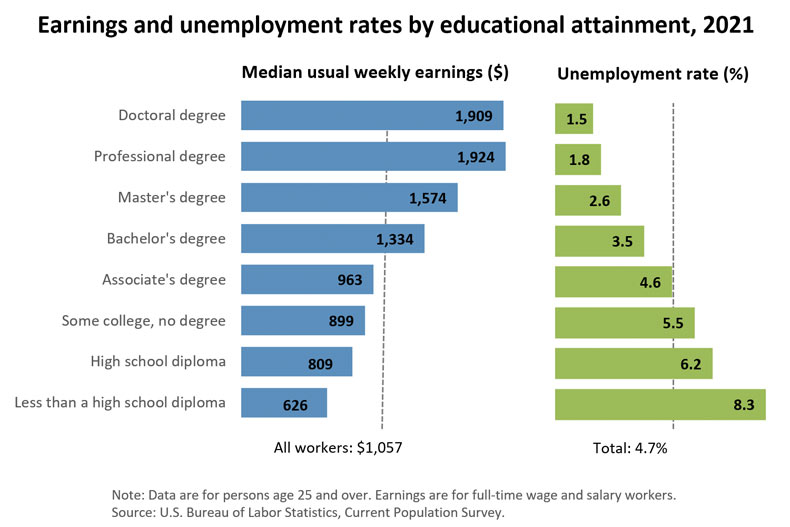
Related Top College Resources







